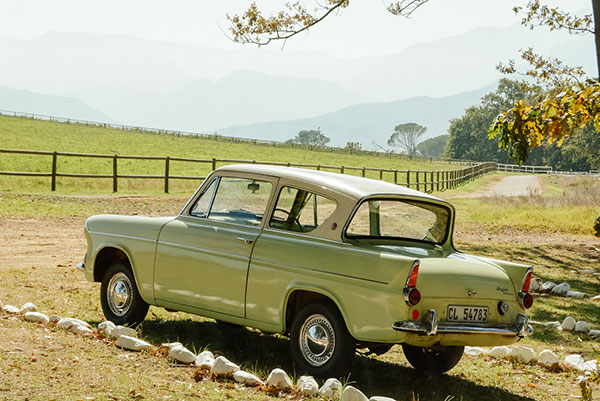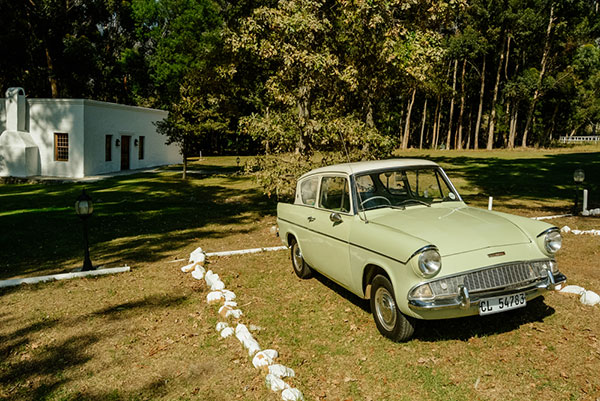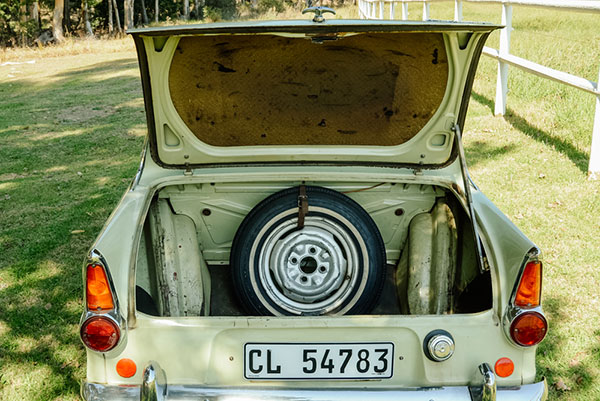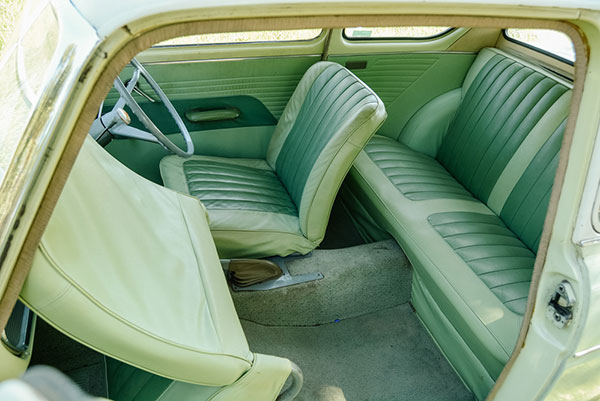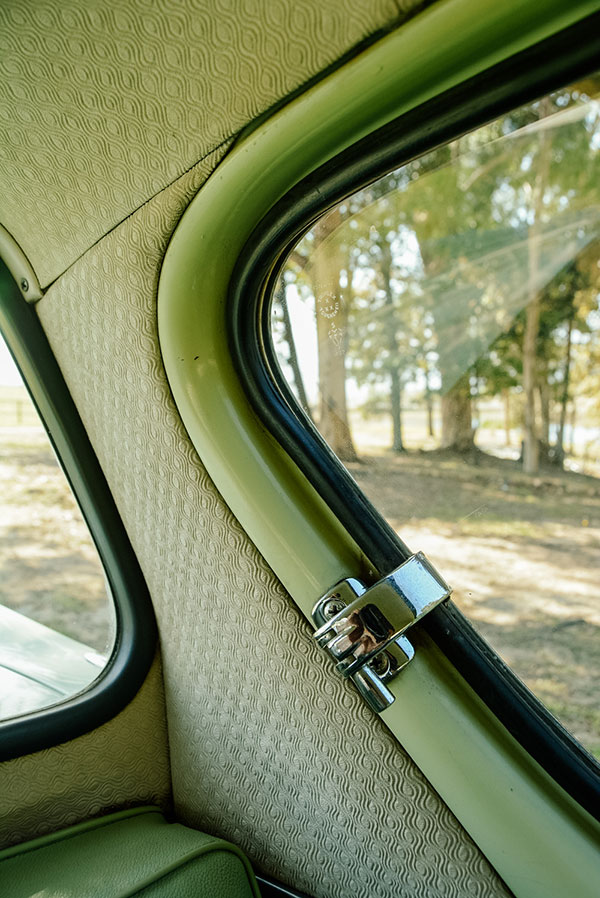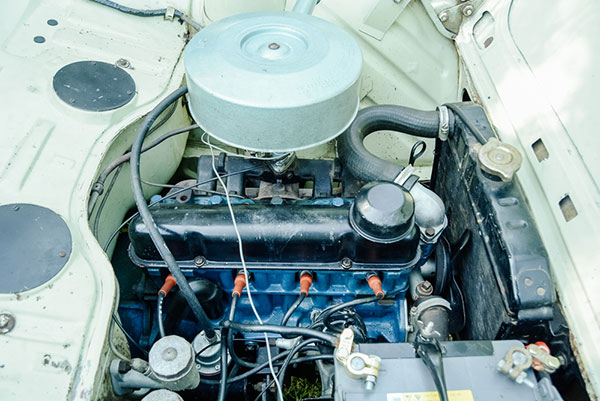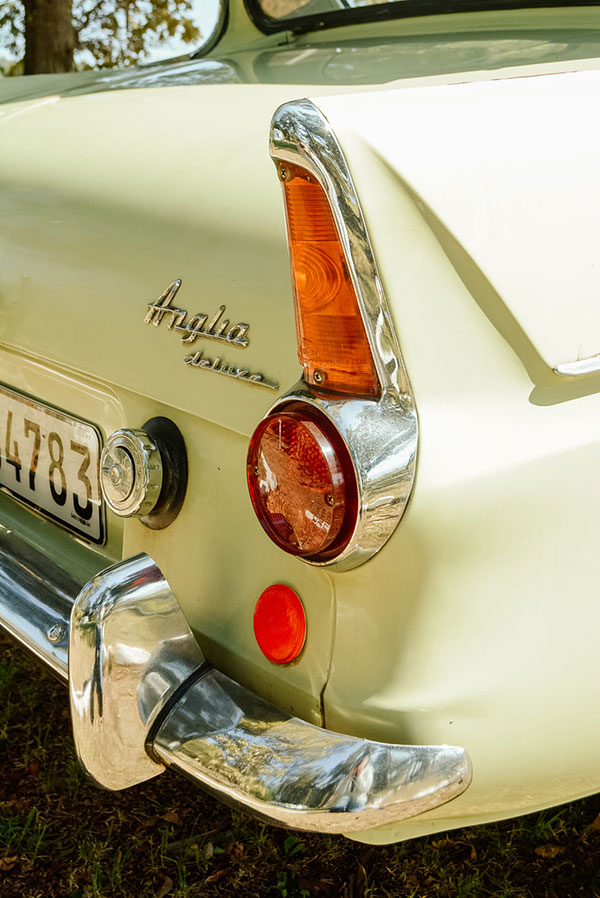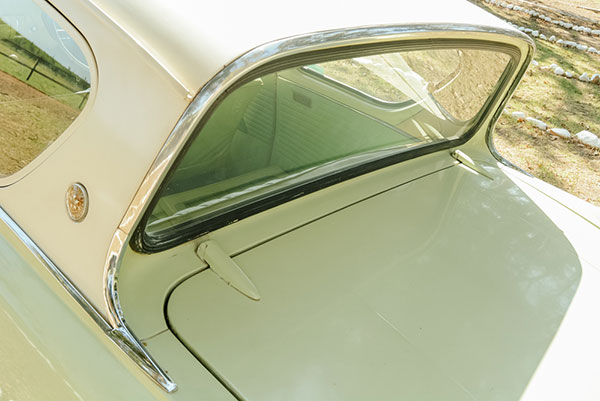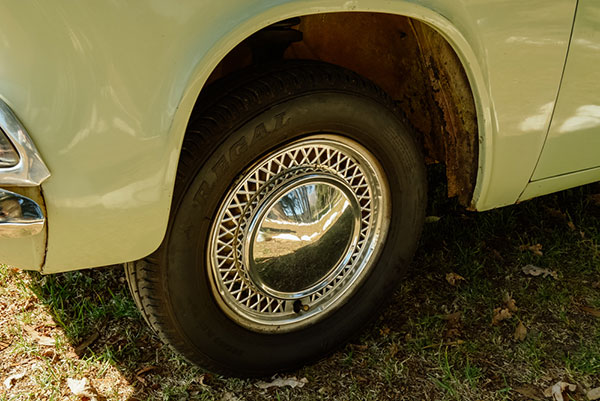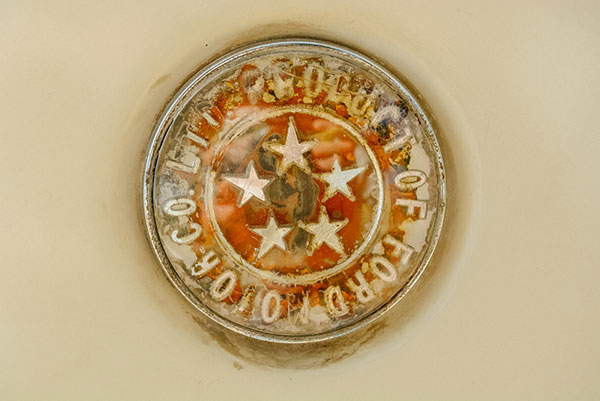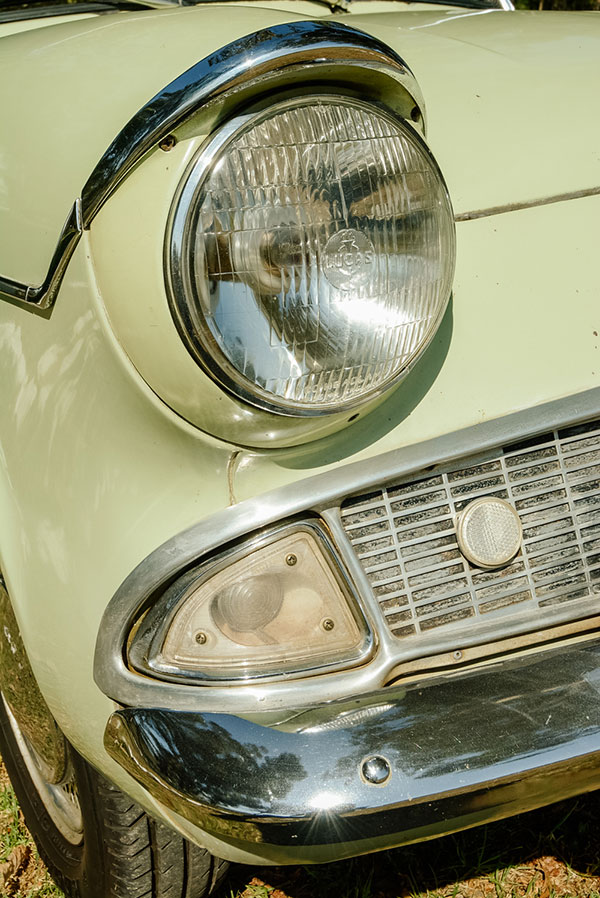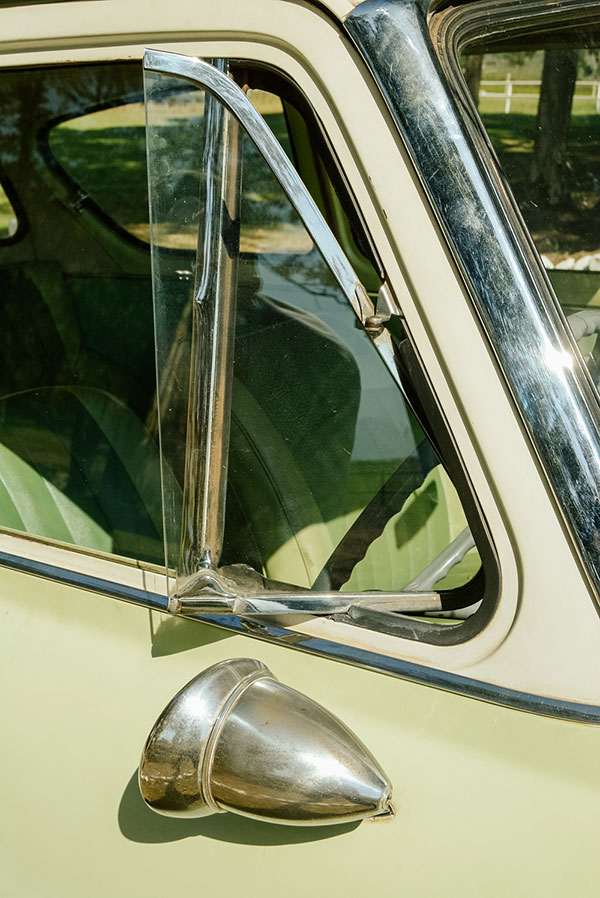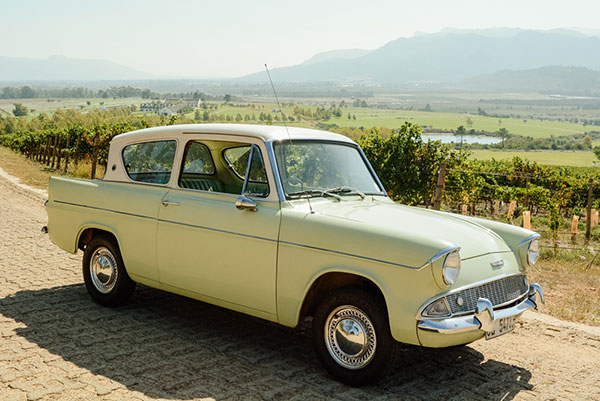
04 Sep Collection in action: Ford Anglia
Mike Monk drives an entry-level Ford that was a pillar of strength in the company’s European post-war history…
Designed and manufactured by Ford UK, when the entry-level Anglia appeared in October 1939, just one month after Great Britain had declared war on Germany, it was the smallest model in the company’s range. It was simple and cheap, a forerunner of what we would call today an entry-level model, and was a foundation stone in the company’s success in the post-war years.
There were essentially four generations of Anglia, but first, though, just how did the model name arise? Anglia is the medieval and late-Latin name for England and the popular belief is that Ford chose it for patriotic reasons in the wake of war with Germany having just been declared a month before the car was launched. Although the name was readily accepted and popular, in 1968 it was considered to not be an appropriate name for the 105E’s successor, which was going to be a true European car. And so the Escort was born…
Back to the beginning. The Anglia lineage began in 1939 with the E04A that lasted through the war years until 1948 when a facelifted version, the E494A, appeared, which was then Britain’s lowest-priced four-wheel car. It stayed in production for four years. During this time, the Anglia and its four-door brother, the Prefect, variously became known as ‘sit up and beg’ – because of the driving position mimicking a dog sitting up and begging – and ‘puddle jumper’ – because of the car’s upright stance and lively suspension that caused it to hop and skip. Subsequently, puddle jumper Fords have a cult following in the world of hot rods.
While a facelifted Anglia continued for another six years as a Popular 103E – still Britain’s lowest-priced car – a completely new, unashamedly ‘three-box’ 100E was launched in 1953, now with unitary construction. It retained the 1 172 cm3 side-valve motor and three-speed gearbox of the earlier cars. The front suspension featured a new coil spring and telescopic damper arrangement that soon became known as the Macpherson Strut suspension.
Then in 1959 came the 105E Anglia, with styling elements borrowed from the 1958 Lincoln Continental, not least the backward-sloping rear window. The gimmick added a new slant (excuse the pun) on European vehicle design that two years later was used by Ford again for the Consul Classic and by Citroën for the Ami. But that was it. In the Lincoln application, it was a design requirement to facilitate an opening ‘Breezeway’ rear window, but for the Anglia it was merely a feature that the marketers claimed would ‘keep the window clear in rain’. Did it? Comments via e-mail please…
But the slanted window was not the only Lincoln-influenced styling feature over the outgoing 100E. The headlights wore fashionable eyebrows while the rear fenders sported tiny fins that carried vertical ‘rocket ship’ tail-lights. Oh, and the forward-hinged bonnet was something novel, too. Just because it was cheap and cheerful, the 105E was far from being drab.
It was not only the looks that grabbed attention. The 105E was the platform for a new cast-iron four-cylinder 997 cm3 engine that was to be dubbed the ‘Kent’ motor. Its oversquare dimensions – bore/stroke 80,97 x 48,41 mm – was something of a departure for British-designed engines of the time. With pushrod overhead valves and independent inlet and exhaust ports, it produced 29 kW at 5 000 r/min at 75 N.m of torque at 2 700. In 1967 it was reworked to have a crossflow cylinder head, and in 1976 a modified version was developed for transverse mounting applications. All in all, the engine was produced in seven capacities ranging from 997 to 1 599 cm3 and the basic design lasted 44 years before it was discontinued. The 105E was also the first British Ford to have a four-speed gearbox, which had synchromesh on the top three ratios.
There were two saloon models, the base-spec Standard and the Deluxe, which boasted chrome side strips, rear light surrounds and wheel trims, a full width chrome grille, a glove box lid and twin sun visors. Electric windscreen wipers replaced the notoriously inadequate vacuum-operated items of the earlier cars. The car was an instant hit. In 1960, the first full year of production, 191 752 Anglias left Ford’s Dagenham plant, setting a new production-volume record for the company.
British Motor magazine tested a car in 1959 and recorded a top speed of 118,8 km/h, a 0-96 km/h time of 26,9 seconds and a fuel consumption figure of 6,86 litres/100km. In April 1960, South Africa’s CAR magazine achieved 117,5 km/h, 26,6 seconds and 6,39 litres/100 km, respectively, in a Deluxe road test – remarkably similar figures.
The car featured here is a 1967 Deluxe that was donated by Miss A M de Bruyn of Pretoria to the Heidelberg Motor Museum in August 1997. The Heidelberg collection was the foundation of the Franschhoek Motor Museum and the car has been left in its totally original and unrestored condition. It does one good to occasionally have the opportunity to drive something that is as honest as the day it was built, as this car proved. Naturally, the two-tone paintwork lacks its original lustre but it still looks distinctive. Anglias were only ever two-door vehicles and while all-round panel fit is not perfect, everything opens and closes without strain.
Apart from some wear on the outer top edge of the driver’s seat, the body-colour-matching vinyl upholstery is still in good condition. The cabin is light and airy and there is a minimum of creature comforts – a single courtesy light above the rear-view mirror, opening rear side windows and, er, that’s it… This car has a period bullet-shaped racing mirror mounted on the driver’s door, and the whip aerial indicates a radio was fitted at some time. A stylish Isosceles trapezoid instrument panel (yes, really) houses an 80-mph speedo, fuel and temperature gauges plus warning lights for oil, generator, main beam and indicators.
Starting up, there is nothing distinctive about the engine note and getting under way is effortless. As already indicated, performance is not the car’s strong point but the gearing quickly gets the car up to cruising speed where it thrums along contentedly. This car is surprisingly rattle-free. The large, thin-rim, plastic (Bakelite?) two-spoke steering wheel is light in operation and the 105E goes and handles without any fuss or drama. Arched front fenders point the way ahead.
In 1962 a more upmarket 123E Anglia Super was added to the line-up, and featured twin chrome side strips, contrasting colour roof and side flash and improved interior trim, including carpet in place of rubber matting. It was powered by an 1 198 cm3 version of the Kent engine and the gearbox now had synchro on all four forward gears.
The 105E was introduced to South Africa in 1960. Yearly sales were steady and reached a peak of 3 266 in 1965, the year before the Super model was added to the line-up when combined sales totalled 4 534. Interestingly, Anglias were assembled locally for a while after production had ended in Britain.
Anglias also helped put Ford on the motor sport map. In 1962, Tony and Michael Brookes led a team who took an Anglia 105E fitted with the £13 Ford Performance Kit to Montlhéry Autodrome near Paris and over seven days and nights and 20 000 km captured six International Class G World Records, averaging 83,47 mph (134,3 km/h). Such was the Anglia’s strength and durability, the car only needed tyre changes throughout the record-breaking run. In 1966 John Fitzpatrick won the British Saloon Car Championship while in South Africa, driving his Broadspeed-spec car, Gordon Briggs is perhaps the best-known exponent of Anglia prowess; his ‘front wheel in the air’ cornering style was legendary.
A total of 1 594 486 Anglias had been produced before the Mk.1 Escort took over as Ford’s entry-level car in 1968. Simple, safe and significant in the history of affordable motoring, it is easy to understand why Anglias were so popular.
